This story appears in ESPN College Football 2016, on newsstands now. Order online today!
Forget for a second players like Christian McCaffrey and Josh Rosen -- those Pac-12 stars are known quantities.
But who are the great unknowns of the conference, the wild-card players who could be breakout stars in 2016 ... or not contribute much?
Here are the biggest X factors on each Pac-12 team, presented in order of predicted finish.
North Division
Washington Huskies: LT Trey Adams

A 6-foot-8, 306-pound sophomore, Adams is tasked with protecting quarterback Jake Browning's blind side a year after the Huskies gave up 33 sacks (seventh in the Pac-12). But the line should be more formidable, as Adams, who started nine games before missing the final two with a shoulder injury, is joined by four other returning starters on the line.
Stanford Cardinal: The offensive line

The Cardinal often reload, rather than rebuild, in the trenches. But they're looking for a new left tackle, left guard and center, so there has to be some worry that a line that gave up only 20 sacks in 2015 (No. 3 in the Pac-12) and paved the way for 223.7 rushing yards per game (No. 2) might take its lumps, at least early on. Christian McCaffrey is likely capable of masking that inexperience. But asking a new, unproven quarterback to do the same might prove dicey.
Oregon Ducks: QB coach David Yost

Yost went to Eugene via Washington State, where he coached wide receivers in a very different offense. But he has worked with talented quarterbacks before. At Missouri, Yost coached Brad Smith, Chase Daniel and Blaine Gabbert. He must groom Dakota Prukop while simultaneously learning the offense.
Washington State: Running backs

The Cougars have the backfield to provide a twist to Mike Leach's air raid attack. Gerard Wicks (107 carries, 610 rushing yards), Jamal Morrow (53-347) and Keith Harrington (37-234) all return, with Wicks providing a big-gain threat: 22 of his carries went for at least 10 yards. Redshirt freshman James Williams has drawn praise from coaches in practice and could also add firepower.
California Golden Bears: The running game

Cal has never averaged more than 153 rushing yards per game under Sonny Dykes, which leaves it in the bottom half of the Pac-12 rankings. But with the likes of Tre Watson (45.8 ypg in 2015), Khalfani Muhammad (48.8 ypg) and Vic Enwere (38.8 ypg), the Bears could push toward the middle of the Pac-12.
Oregon State Beavers: The defensive line
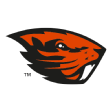
The Beavers recorded just 17 sacks last season (Pac-12 leader Arizona State tallied 46), and no player registered more than two. OSU likely will face several first-year quarterbacks this year (against Colorado, California, Utah, Stanford and Oregon), so getting a pass rush could be a tipping point. Gary Andersen took over D-line coaching duties, hoping to mold Titus Failauga (29 tackles, one sack), Sumner Houston (21 tackles) and Baker Pritchard (30 tackles, 1.5 sacks) into a group that can get after quarterbacks.
South Division
USC Trojans: DL Rasheem Green
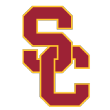
The Trojans are in complete rebuilding mode on the defensive front, and things got worse when projected starter Kenny Bigelow was lost in the spring with a torn ACL -- his second in three years. Green leads a talented group of sophomores. He was solid off the bench as a freshman, with nine tackles combined against Oregon and Stanford. Noah Jefferson played in every game and started in the Holiday Bowl, and Jacob Daniel and Malik Dorton also made appearances, albeit brief ones. It's a group that's thin on depth and experience.
UCLA Bruins: DL Eddie Vanderdoes
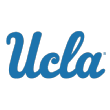
Vanderdoes, a junior, was one of the Pac-12's best defenders before suffering a knee injury in the opener after he'd already recorded eight tackles, two for a loss, against Virginia. Without Vanderdoes, as well as linebacker Myles Jack (knee) and cornerback Fabian Moreau (foot), all of whom were lost for the season, the UCLA defense allowed nearly 200 rushing yards per game. The return of the 6-3, 305-pound Vanderdoes (50 tackles, 5.5 tackles for loss in 2014) will help fix that.
Arizona Wildcats: RB Nick Wilson
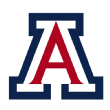
When healthy, Wilson is one of the conference's most dynamic players. Like quarterback Anu Solomon, the junior had a spectacular debut in 2014, rushing for 1,375 yards and 16 touchdowns. But also like Solomon, health is a concern -- knee and foot injuries limited him last season to 725 yards (559 in the first four games). He gives the Wildcats a score-from-anywhere threat: Three times in 2014 he scored on touchdown runs of 72 yards or more.
Utah Utes: RB Joe Williams

With the lack of an explosive passing attack, the Utes leaned heavily on senior running back Devontae Booker (2,773 yards, 21 touchdowns over the past two seasons). Williams, who carried 104 times for 477 yards last year, is expected to step in. After Booker injured a knee last November, Williams made the most of his chance in Utah's final three games, gaining 399 yards on 85 carries with three scores, including two against in-state rival BYU.
Arizona State Sun Devils: CB/WR/RB Gump Hayes
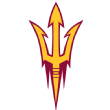
If you don't have a three-way player in the Pac-12, you're behind the curve. For ASU, that player is Hayes. He'll likely be used primarily as a cornerback after making the switch from running back last season, but you'll see specific offensive sets for him as a hybrid back. He'll also handle punt return duties after averaging 8.4 yards per return last season. Head coach Todd Graham has described him as a potential difference-maker in all three roles.
Colorado Buffaloes: QB Sefo Liufau
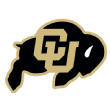
Will Liufau be available in 2016? After suffering a Lisfranc foot injury at the end of last season, there is speculation he might redshirt. But that likely won't be known until well into fall camp. If Liufau can go, the Buffs get a veteran who has started 29 games and completed 62.9 percent of his passes, with 49 touchdowns and 29 interceptions.
